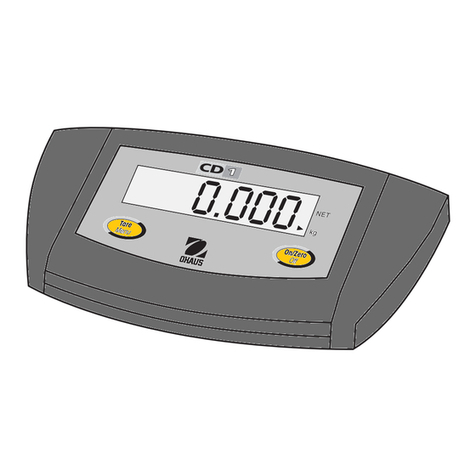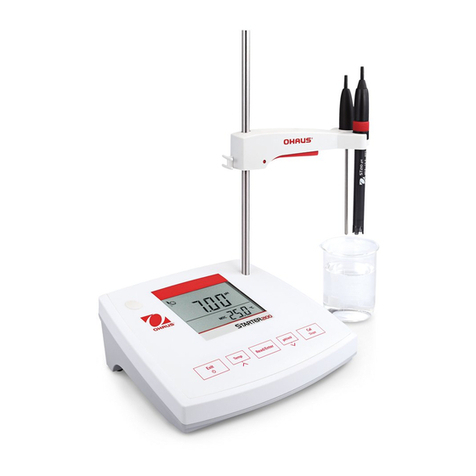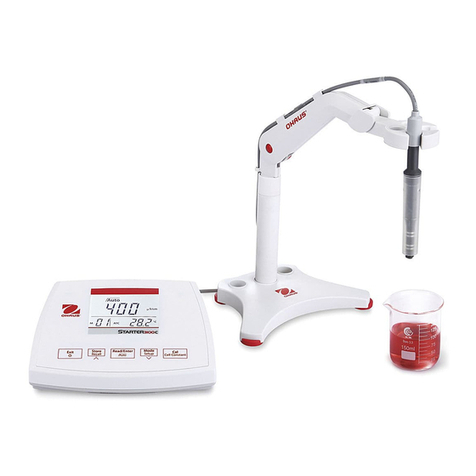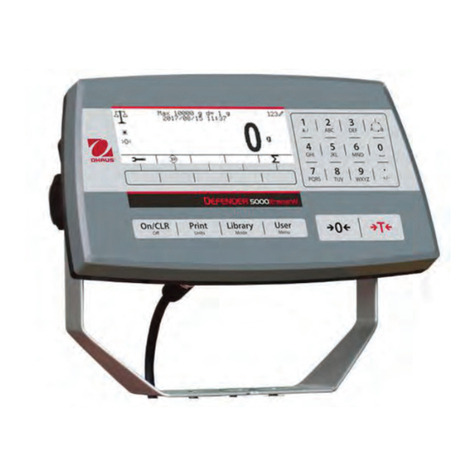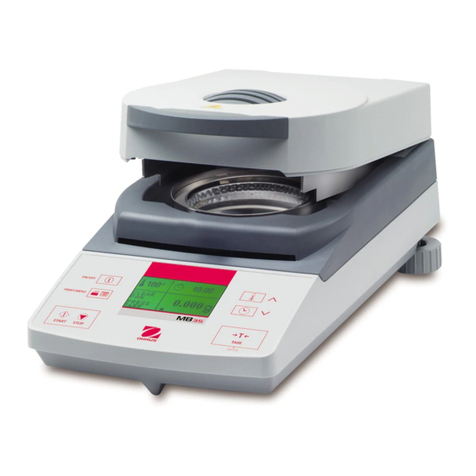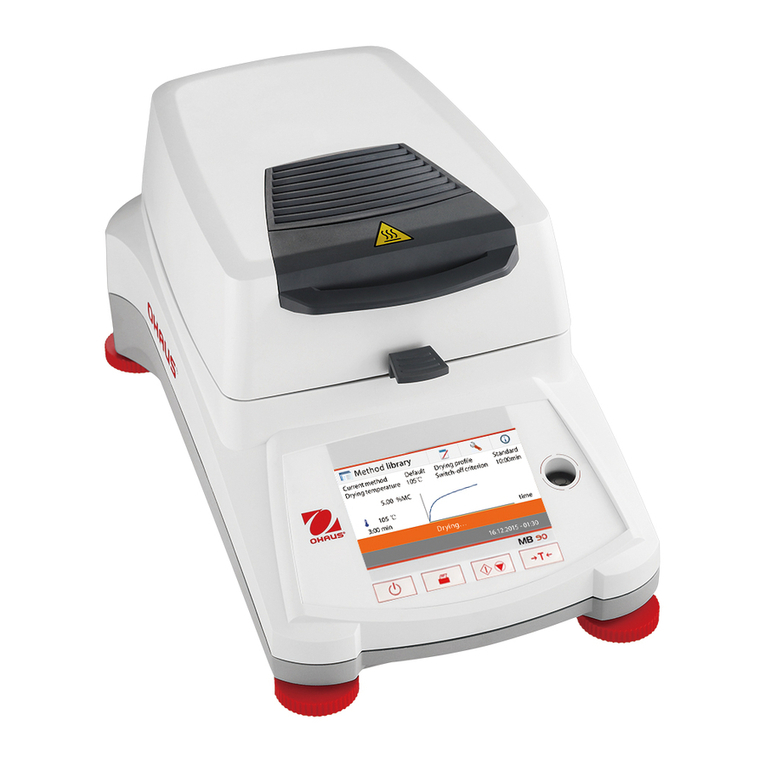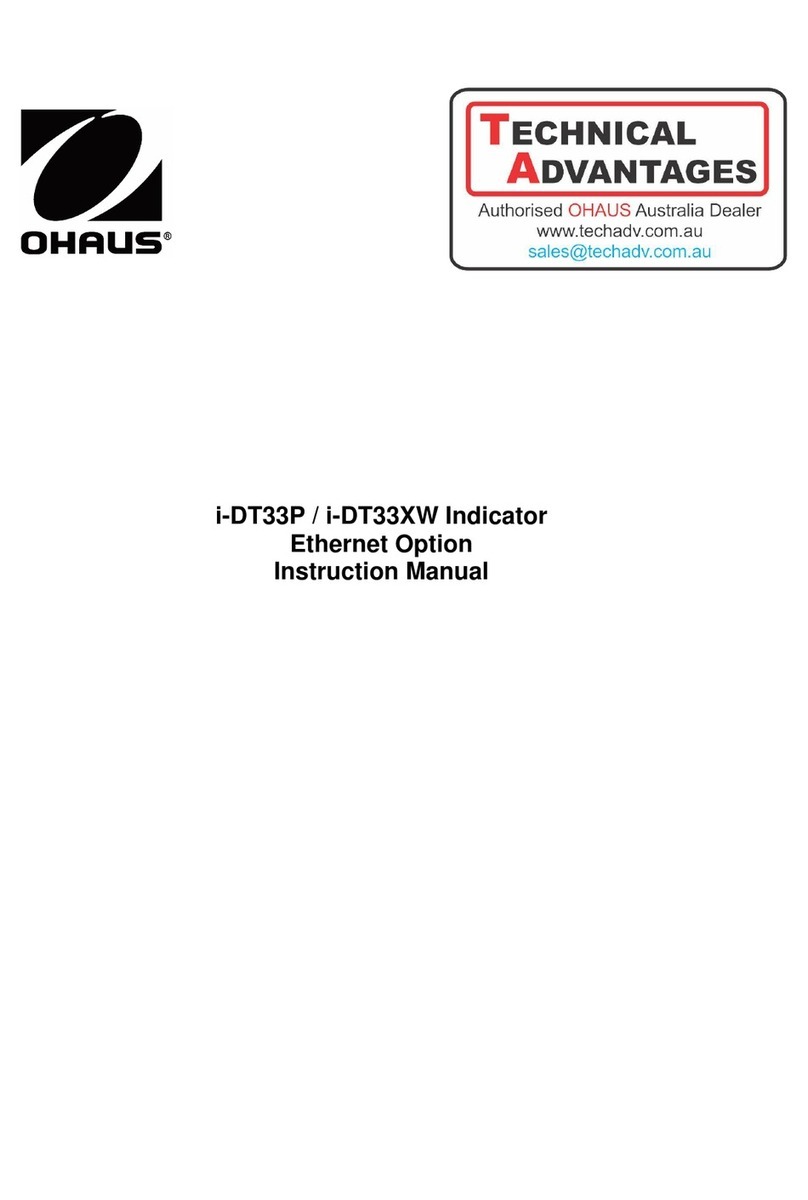
Ohaus Corporation, 19A Chapin Road, P.O. Box 2033, Pine Brook, NJ, 07058-2033, SA
Declaration o Con ormity We, Ohaus Corporation, declare under our sole responsibility that the balance models listed below marked with
CE - are in conformity with the directives and standards mentioned.
Balance model (s) Moisture Analyzer MB35
Marked with: EC Directive (Including applicable amendments) Standard
73/23/EC EN61010-1:1993 + A2: 1995
Electrical equipment for use within specified voltage limits Safety requirements for Electrical Equipment for Measurement, Control
Laboratory se, Part 1: General Requirements
89/336/EC EN61326:1997 (class B)
Electromagnetic compatibility EMC Emissions, residential, commercial and light industry.
EN61326:1997 + A1:1998 (minimal requirements)
EMC Immunity: Minimum test requirements.
EN61000-3-2:1995 + A1:1998 + A2: 1998; EN61000-3-3:1995
EMC Part 3 (for equipment rated input current < or=16A)
Limits- Section 2: Limits for harmonic current emissions
Limits- section 3: Limitation of voltage fluctuations and flicker in low
voltage supply systems
Last two digits of the year in which the CE marking was affixed: 00
Additional Standards
CAN/CSA-C22.2 No. 1010.1-92; UL Std. No. 3101-1
Safety requirements for Electrical Equip. for measurement, Control and Laboratory se, Part 1; General Requirements
FCC FCC, Part 15, class A Emission
AS/NZS4251.1 AS/NZS4252.1 Emission and Immunity
ISO 9001 Registration or Ohaus Corporation.
Ohaus Corporation, SA, was examined and evaluated in 1994 by the Bureau Veritas Quality International,
BVQI, and was awarded ISO 9001 registration. This certifies that Ohaus Corporation, SA, has a quality system that conforms with the international standards
for quality management and quality assurance (ISO 9000 series). Repeat audits are carried out by BVQI at intervals to check that the quality system is
operated in the proper manner.
FCC NOTE: THIS EQ IPMENT HAS BEEN TESTED AND FO ND TO COMPLY WITH THE LIMITS FOR A CLASS A DIGITAL DEVICE, P RS ANT TO
PART 15 OF THE FCC R LES.
THESE LIMITS ARE DESIGNED TO PROVIDE REASONABLE PROTECTION AGAINST HARMF L INTERFERENCE WHEN THE EQ IPMENT IS
OPERATED IN A COMMERCIAL ENVIRONMENT. THIS EQ IPMENT GENERATES, SES, AND CAN RADIATE RADIO FREQ ENCY ENERGY
AND, IF NOT INSTALLED AND SED IN ACCORDANCE WITH THE INSTR CTION MAN AL, MAY CA SE HARMF L INTERFERENCE TO RADIO
COMM NICATIONS. OPERATION OF THIS EQ IPMENT IN A RESIDENTIAL AREA IS LIKELY TO CA SE HARMF L INTERFERENCE IN WHICH
CASE THE SER WILL BE REQ IRED TO CORRECT THE INTERFERENCE AT HIS OWN EXPENSE.
Ohaus Corporation, Pine Brook, NJn
nauthorized changes or modifications to this equipment are not permitted.

